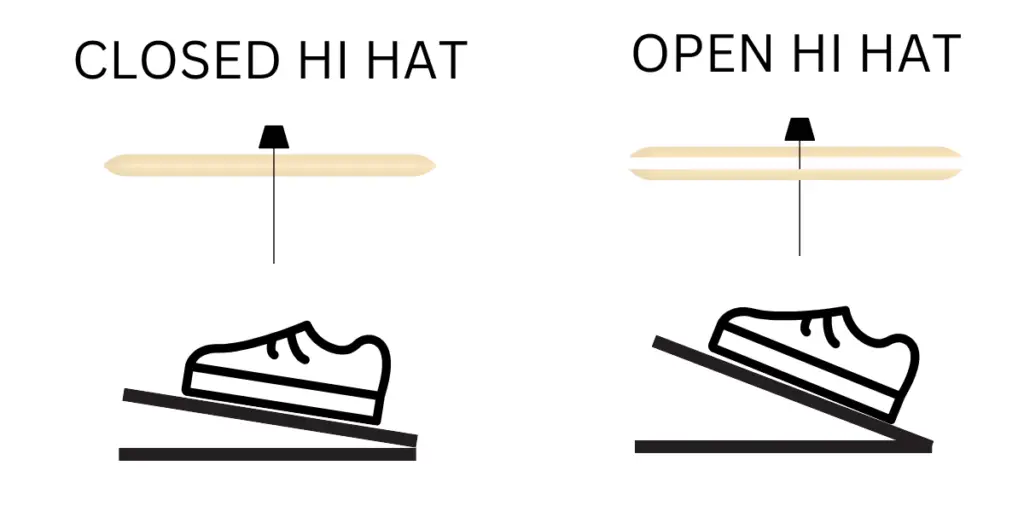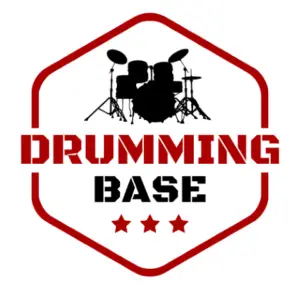Experimentation is always encouraged when it comes to drumming, and many drummers like to use their cymbals differently to achieve different affects. In this article I’ll be addressing the idea of crashing the hi-hat cymbals. Here’s the short answer…
It is possible to use the hi-hats as a crash cymbal by either having them in an open position, or using the top hi-hat on its own. The hi-hat cymbal can be crashed by hitting it on the edge using the shoulder of the stick, however it will not produce as much volume, sustain or shimmer as a crash cymbal.
Hi-Hat vs Crash Cymbal
Hi-hat cymbals come in a pair and can be opened or closed using the foot pedal.
The closed position is utilised most often, whilst the open position is usually used as an accent. Closed hi-hats have a shorter, sharper sound compared to open hi-hats which have more sustain.
The hi-hats are used to maintain a beat, usually during the verse.

Crash cymbals are used as an accent. For example, a crash cymbal may be used when transitioning from a verse to a chorus or when starting or finishing a fill.
Here are the key differences between hi-hats and crash cymbals:
| Hi-Hats | Crash |
| 13”-16” diameter | 14”-18” diameter |
| Similar thickness across the cymbal | More tapered towards the edge |
| Weigh roughly 1kg each (2kg combined) | Weigh roughly 1.2-1.6 kg |
| Used to maintain the beat | Used as an accent |
| Hit towards the centre with the tip of the stick | Hit towards the edge with the shoulder of the stick |
| Quieter sound with more “ping” | Louder sound with more shimmer and attack |
Crashing a Hi-Hat
Any cymbal can technically be “crashed” by hitting it with more force towards the edge using the shoulder of the stick. The result is that the cymbal sounds louder and has more shimmer and sustain.
Typically, hi-hat cymbals are hit using the tip of the stick between the edge and the bell of the cymbal, to produce a shorter, sharper sound with less sustain. This is often referred to as “riding” the cymbal.
If you want to crash the hi-hat cymbal then you’ll either need to use a single hi-hat on a stand, or at least keep the hi-hats in an open position by lifting the foot pedal up. Otherwise, if the hi-hats are closed then the sound will have barely any sustain and you won’t be able to crash it.
If you crashed a hi-hat cymbal, you’d notice the following differences in the sound:
- More sustain
- More shimmer
- Higher volume

However, compared to crashing a dedicated crash cymbal, crashing the hi-hat would:
- Not sound as loud
- Not produce as much shimmer and sustain
- Have a higher pitch
This is due to the different physical characteristics (e.g. diameter, thickness, tapering, bell size and shape).
Check out this YouTube video where you can hear the differences in action.
Using the Top vs the Bottom Hi-Hat
If you are planning on just using one cymbal from your hi-hat pair as a crash cymbal, then I’d recommend choosing the “top” hi-hat.
The top hi-hat is lighter and thinner compared to the bottom hi-hat which means you’ll get more attack (meaning the sound is heard quickly and is more explosive). The bottom hi-hat will usually sound to heavy and is harder to crash.
Which Hi-Hats Work Best for Crashing?
If you want to get a good crash effect from a hi-hat cymbal, then you should try and choose one with similar characteristics to a crash cymbal.
This means choosing the following characteristics:
- Larger diameter: hi-hats typically range from 13″-16″, opting for a hi-hat with a diameter of at least 15″ is helpful. This will result in a louder, darker sound.
- Thinner and lighter: choosing a hi-hat which is on the lighter side (less than 1000 g) will help to produce a crashing sound
- More tapered: again this helps to crash it. It can be hard to find though on a hi-hat cymbal
Check out my article on crashing a ride cymbal.

